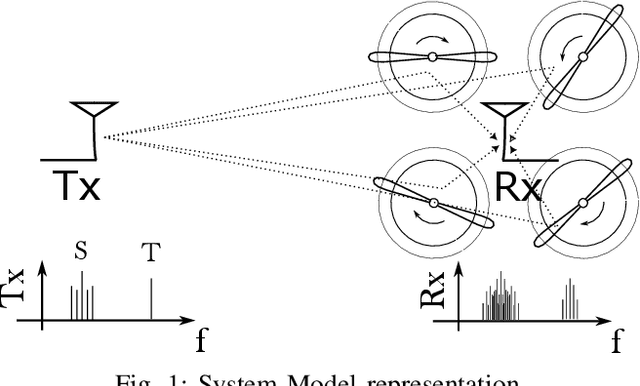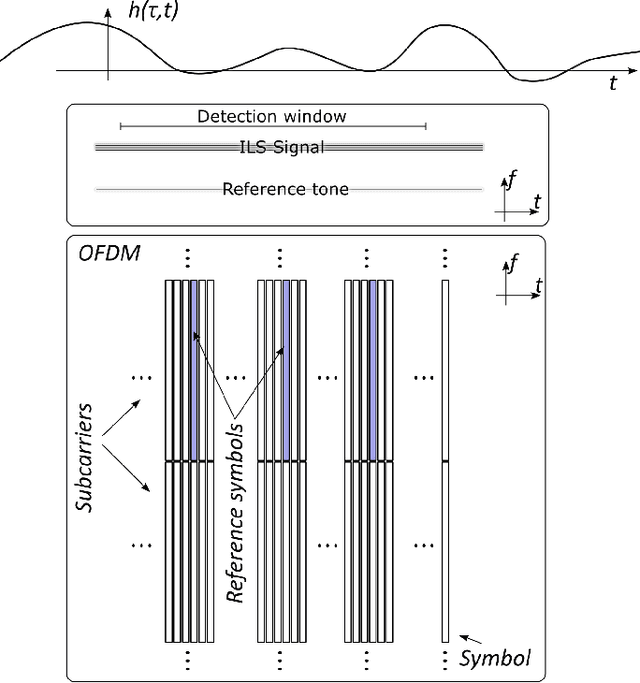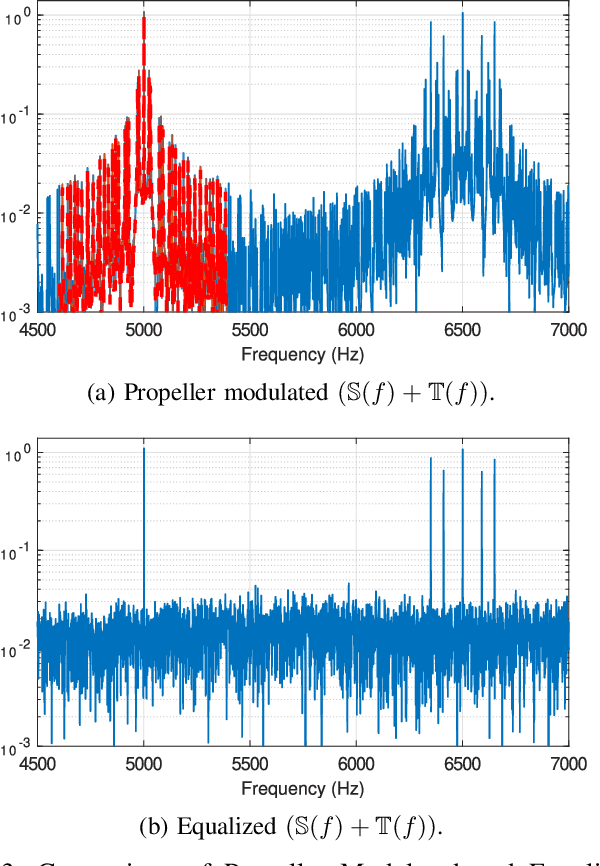Mostafa Ibrahim
Allan
Signal Whisperers: Enhancing Wireless Reception Using DRL-Guided Reflector Arrays
Jan 25, 2025



Abstract:This paper presents a novel approach for enhancing wireless signal reception through self-adjustable metallic surfaces, termed reflectors, which are guided by deep reinforcement learning (DRL). The designed reflector system aims to improve signal quality for multiple users in scenarios where a direct line-of-sight (LOS) from the access point (AP) and reflector to users is not guaranteed. Utilizing DRL techniques, the reflector autonomously modifies its configuration to optimize beam allocation from the AP to user equipment (UE), thereby maximizing path gain. Simulation results indicate substantial improvements in the average path gain for all UEs compared to baseline configurations, highlighting the potential of DRL-driven reflectors in creating adaptive communication environments.
Block Phase Tracking Reference Signal (PTRS) Allocation for DFT-s-OFDM
Jan 20, 2025Abstract:This study introduces a Block Phase Tracking Reference Signal (PTRS) allocation approach for Discrete Fourier Transform-spread-Orthogonal Frequency Division Multiplexing (DFT-s-OFDM) systems to enhance phase noise tracking and compensation. Our proposed block allocation methodology leverages the concepts of multiresolution time-frequency tiling for more effective sampling, thereby mitigating aliasing effects and improving phase noise resilience. A key contribution of our approach is a novel modulation and demodulation scheme, incorporating a dedicated DFT-s-OFDM symbol, a modulator branch for block PTRS generation, and a dedicated demodulator for accurate phase noise estimation and correction.
Guiding Wireless Signals with Arrays of Metallic Linear Fresnel Reflectors: A Low-cost, Frequency-versatile, and Practical Approach
Jul 27, 2024Abstract:This study presents a novel mechanical metallic reflector array to guide wireless signals to the point of interest, thereby enhancing received signal quality. Comprised of numerous individual units, this device, which acts as a linear Fresnel reflector (LFR), facilitates the reflection of incoming signals to a desired location. Leveraging geometric principles, we present a systematic approach for redirecting beams from an Access Point (AP) toward User Equipment (UE) positions. This methodology is geared towards optimizing beam allocation, thereby maximizing the number of beams directed towards the UE. Ray tracing simulations conducted for two 3D wireless communication scenarios demonstrate significant increases in path gains and received signal strengths (RSS) by at least 50dB with strategically positioned devices.
Propeller Modulation Equalization via Reference Tones
Jul 26, 2024



Abstract:Propeller modulation, also known as micro-Doppler modulation, presents a significant challenge in radio frequency (RF) inspection operations conducted via drones. This paper investigates the equalization of propeller modulation effects on RF signals, specifically targeting applications in navigation aids such as Instrument Landing Systems (ILS). By employing a continuous reference tone, the propeller-induced Doppler spread can be effectively captured and equalized, improving signal integrity and accuracy. Simulation results demonstrate that the proposed equalization method significantly reduces DDM deviation caused by propeller modulation, even under various propeller speeds. The findings suggest that incorporating such equalization techniques can enhance the reliability and efficiency of drone-based RF inspections.
Large Language Models (LLMs) Assisted Wireless Network Deployment in Urban Settings
May 22, 2024



Abstract:The advent of Large Language Models (LLMs) has revolutionized language understanding and human-like text generation, drawing interest from many other fields with this question in mind: What else are the LLMs capable of? Despite their widespread adoption, ongoing research continues to explore new ways to integrate LLMs into diverse systems. This paper explores new techniques to harness the power of LLMs for 6G (6th Generation) wireless communication technologies, a domain where automation and intelligent systems are pivotal. The inherent adaptability of LLMs to domain-specific tasks positions them as prime candidates for enhancing wireless systems in the 6G landscape. We introduce a novel Reinforcement Learning (RL) based framework that leverages LLMs for network deployment in wireless communications. Our approach involves training an RL agent, utilizing LLMs as its core, in an urban setting to maximize coverage. The agent's objective is to navigate the complexities of urban environments and identify the network parameters for optimal area coverage. Additionally, we integrate LLMs with Convolutional Neural Networks (CNNs) to capitalize on their strengths while mitigating their limitations. The Deep Deterministic Policy Gradient (DDPG) algorithm is employed for training purposes. The results suggest that LLM-assisted models can outperform CNN-based models in some cases while performing at least as well in others.
Time-Frequency Warped Waveforms for Well-Contained Massive Machine Type Communications
May 01, 2023Abstract:This paper proposes a novel time-frequency warped waveform for short symbols, massive machine-type communication (mMTC), and internet of things (IoT) applications. The waveform is composed of asymmetric raised cosine (RC) pulses to increase the signal containment in time and frequency domains. The waveform has low power tails in the time domain, hence better performance in the presence of delay spread and time offsets. The time-axis warping unitary transform is applied to control the waveform occupancy in time-frequency space and to compensate for the usage of high roll-off factor pulses at the symbol edges. The paper explains a step-by-step analysis for determining the roll-off factors profile and the warping functions. Gains are presented over the conventional Zero-tail Discrete Fourier Transform-spread-Orthogonal Frequency Division Multiplexing (ZT-DFT-s-OFDM), and Cyclic prefix (CP) DFT-s-OFDM schemes in the simulations section.
Generalized Categorisation of Digital Pathology Whole Image Slides using Unsupervised Learning
Dec 27, 2020



Abstract:This project aims to break down large pathology images into small tiles and then cluster those tiles into distinct groups without the knowledge of true labels, our analysis shows how difficult certain aspects of clustering tumorous and non-tumorous cells can be and also shows that comparing the results of different unsupervised approaches is not a trivial task. The project also provides a software package to be used by the digital pathology community, that uses some of the approaches developed to perform unsupervised unsupervised tile classification, which could then be easily manually labelled. The project uses a mixture of techniques ranging from classical clustering algorithms such as K-Means and Gaussian Mixture Models to more complicated feature extraction techniques such as deep Autoencoders and Multi-loss learning. Throughout the project, we attempt to set a benchmark for evaluation using a few measures such as completeness scores and cluster plots. Throughout our results we show that Convolutional Autoencoders manages to slightly outperform the rest of the approaches due to its powerful internal representation learning abilities. Moreover, we show that Gaussian Mixture models produce better results than K-Means on average due to its flexibility in capturing different clusters. We also show the huge difference in the difficulties of classifying different types of pathology textures.
 Add to Chrome
Add to Chrome Add to Firefox
Add to Firefox Add to Edge
Add to Edge